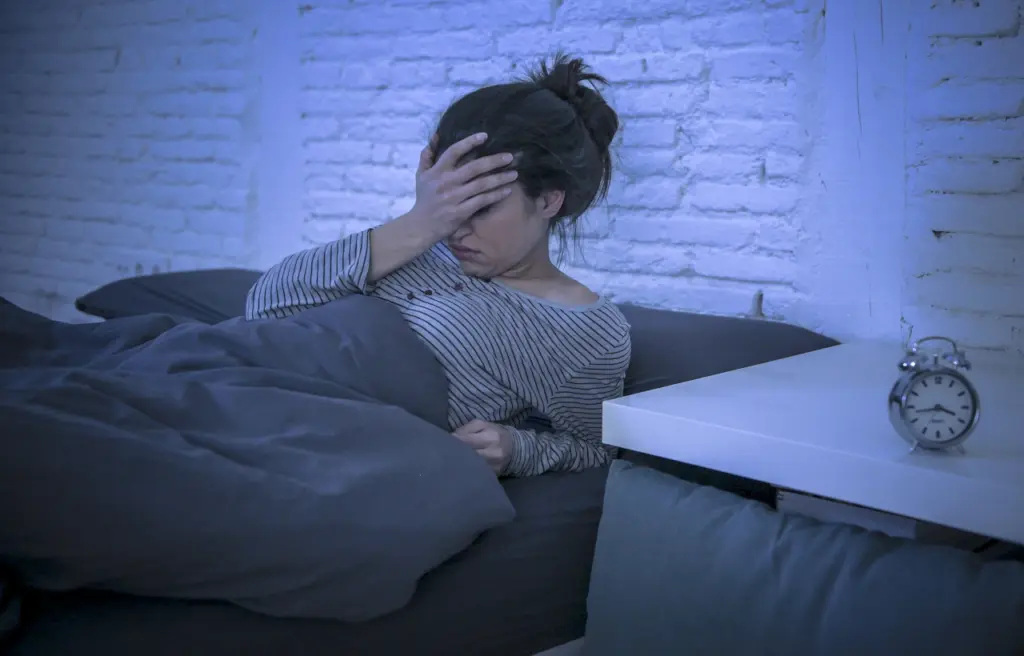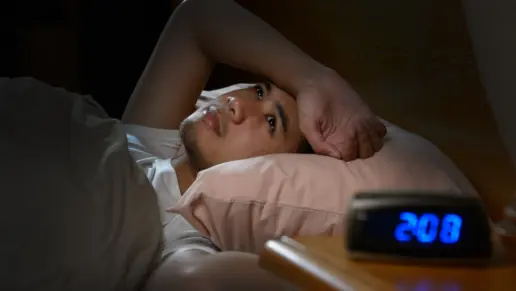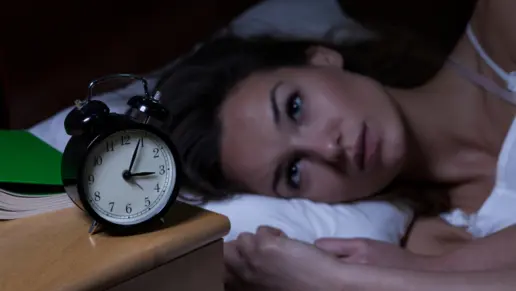Ambien (zolpidem) is a commonly prescribed sleeping pill to treat insomnia. The following guide provides an in-depth look at this medication, its effects, and its potential risks and benefits.
What Is Ambien (Zolpidem)?
Ambien® is the well-known brand name for zolpidem tartrate, a fast-acting, non-benzodiazepine hypnotic (sedative). This medication was approved by the FDA in 1992 for the short-term relief of insomnia in individuals experiencing difficulties falling or staying asleep.
Zolpidem can reduce the time it takes to fall asleep (called sleep latency), may increase sleep hours and can minimize nocturnal awakening episodes that disrupt peaceful rest. Zolpidem belongs to a medication category known as Z-drugs, which also includes Sonata, Lunesta and Imovane.
Zolpidem is not a benzodiazepine (a type of medication used for sleep and anxiety), but it influences the same brain regions (GABA-A) that can promote sleep, but with a more sensitive approach.
Compared to benzos, Ambien may be more selective on how it affects the brain, has a shorter action duration, potentially has a reduced risk of dependence or abuse, and has less withdrawal effects.
Despite these pharmacological differences from benzodiazepines, zolpidem can still be habit-forming and abuse-prone, so the DEA categorizes it as a Schedule IV controlled substance.
In the United States, individuals will likely be offered an Ambien generic alternative rather than the original Ambien commercial brand. Chemically and therapeutically, the two should deliver identical clinical benefits. The prescription depends on a person’s unique circumstances and medical criteria.
How Zolpidem Works in the Body
Zolpidem works by reducing the activity of the brain’s wake circuits in a way that’s conducive to falling and remaining asleep. Z-drugs like zolpidem have a different chemical structure than benzodiazepines, but they act on the same GABA-A receptors that sedatives like benzos use to generate their sleep-inducing effects.

The difference between benzos and Z-drugs is that these non-benzodiazepines are more selective in how they exert their effects. GABA-A is the brain’s main calming system, working in different brain regions through receptors linked to calming effects like sleep, anxiety relief or muscle relaxation.
Benzodiazepines affect all GABA-A receptor types, producing broad calming effects (like sleep and seizure control), while zolpidem influences a subtype (BZ1) more associated with sleep. That’s why zolpidem mainly produces drowsiness rather than full-body sedation like benzos do.
Onset and Duration
When a person takes Ambien on an empty stomach, the immediate-release tablet reaches peak blood levels in about 30 minutes, with its highest concentration occurring in around 90 minutes. Food can delay absorption, so it’s advisable to take the pill without food.
Extended-release versions delay how fast zolpidem exerts its effects, prolonging them for about three hours. This can help with middle-of-the-night awakenings, but it also raises the likelihood of next-morning grogginess.
Zolpidem is a short-acting sedative, so after three hours, almost half of the drug will be eliminated, and by the sixth hour, most of it will be gone. However, not everyone is equally sensitive to Ambien’s sedative effects, or eliminates the drug at an equal rate.
That’s why the FDA recommends taking zolpidem only when a person can devote a full 7–8 hours to sleep, to reduce the risk of next-morning impairment caused by lingering effects.
Melatonin vs. Ambien: Apples and Oranges
A common question regarding this medication is “How much melatonin is equal to Ambien?” The answer is none.
Melatonin is a natural hormone sold as a supplement that controls the body’s circadian clock, and zolpidem is a medication that influences GABA-A modulation. While they can both promote sleep, they do so through different mechanisms, so their doses are not equivalent.
Typical over-the-counter melatonin doses range from 1–10 mg, so even 20 mg of melatonin (an extremely high dose) may not replicate the rapid sedative effect of a 5 mg zolpidem tablet.
Ambien is more potent, obtained only by prescription, faster acting and carries risks of dependence and complex sleep behaviors as a side effect.
Melatonin can be bought over the counter and may be less potent (depending on dosage), but its long-term effects are not as well studied as zolpidem. Also, as a supplement not regulated by the FDA, in multiple cases, there’s more or less of the active ingredient than what the bottle claims, further complicating estimates on how much melatonin can mimic zolpidem’s effects.
Melatonin is not recommended by the American Academy of Sleep Medicine as a first-choice option for insomnia, so self-medicating with it is unwise. Seek medical guidance to remain safe.
Zolpidem FAQs
Yes, Ambien and its generic formulations are federally classified as Schedule IV controlled substances in the United States. Schedule IV drugs (like Xanax) have recognized medical uses, but they also carry the risk of abuse, dependence, and addiction.
Ambien starts working after 30 minutes, with peak effects lasting between 1-2.5 hours. In about 2-3 hours, 50% of the drug has been eliminated from a person’s body, yet its sedative effects can linger for up to six hours or more. In urine tests, the presence of Ambien can be detected for up to 48–72 hours after initial use.
Yes, Ambien can be addictive for some individuals. While Ambien may be less habit-forming than benzodiazepines, there have been reports of compulsive Ambien use, physical dependence, addiction and withdrawal effects. That’s why Ambien is recommended for short-term use and should always be taken under strict medical supervision.
No, Ambien is not a benzodiazepine. Ambien (zolpidem) belongs to a medication category called imidazopyridines (known as Z-drugs), also including zopiclone (Imovane), eszopiclone (Lunesta) and zaleplon (Sonata).
These medications have chemical structures different from benzodiazepines, influence sleep regions in the brain more selectively, have shorter half-lives, and may cause fewer side effects than benzodiazepines, though risks still exist.
Ambien Side Effects and Safety Concerns
Common side effects of Ambien include:
- Drowsiness
- A drugged feeling
- Dizziness
- Lightheadedness
- Diarrhea or upset stomach
- Headache
- A general sense of weakness or heavy limbs
- Short-lived confusion
- Difficulty concentrating
Less common adverse effects may include:
- Sweating
- Fainting
- Swelling
- Falls
- Frequent urges to urinate
- Eye problems
- Ringing in the ears
- Coughing
- Itching
- High blood pressure
- Anxiety
- Hallucinations
- Constipation
- Altered liver test results
- Thirst
Serious Side Effects and Complex Sleep Behaviors
Ambien can cause a severe allergic reaction that can threaten your life. Seek medical help if you develop swelling of the lips, tongue or throat; shortness of breath; or a rash.
A rare yet severe effect of Ambien is the possibility of engaging in activities while you remain asleep. These effects are called complex sleep behaviors. Some individuals, even at normal doses, may sleepwalk, cook, call people on the phone or even drive vehicles, often with zero recollection the next morning.
Injuries, crashes and fatalities have occurred. Ambien is not recommended for individuals with prior episodes of drug-induced complex sleep behaviors and should be stopped if they occur. If you experience one, call your clinician.
Severe effects, like anterograde amnesia (like forgotten shopping sprees after taking Ambien), hallucinations, bizarre mood shifts, next-morning movement difficulties and falls (especially in older adults) are also possible.
Tolerance, Dependence, and the Question of Ambien Addiction
The longer a person’s brain relies on Ambien for inducing sleep, the bigger the risk that they may develop a tolerance to it. This means larger doses are necessary to achieve the desired effects. This evolving process can lead to a physical and psychological dependence on Ambien, even precipitating withdrawal symptoms when stopping its use, like rebound insomnia, anxiety, tremors and seizures.
Under a physician’s supervision, remaining compliant with prescribed doses, and using it short-term as intended, the risk of compulsive harmful use of Ambien is uncommon. Yet, Ambien misuse is well documented.
An estimated 4.7 million Americans misuse sedative prescriptions like Ambien, seeking daytime euphoria, or consuming more than prescribed due to tolerance. This is why, for individuals who have struggled with substance abuse in the past, close monitoring is recommended. If possible, they should be steered toward non-sedative sleep therapies first.
Safety Recommendations
Due to potential risks, the following precautions are recommended with Ambien use.
- Women and older adults usually need a lower Ambien dosage as they are more sensitive to its effects.
- Avoid alcohol, opioids, antihistamines and other CNS depressants as they may cause respiratory depression.
- Do not take an extra pill the same night, even if you cannot fall or remain asleep.
- Evaluate your wakefulness state the next morning, and don’t drive or operate machinery until you feel fully alert.
- Re-evaluate with your care team if you still need Ambien beyond two to four weeks, as safer and more effective behavioral options exist.
- Seek medical help if you experience memory blackouts, complex sleep behaviors, worsening depression, suicidal thoughts, severe confusion, breathing difficulties, seizures or withdrawal signs.
- Do not stop taking Ambien abruptly without medical guidance, as it may increase your chances of withdrawal symptoms.
Long-Term Consequences
The long-term consequences of sedative medications like Ambien may include memory problems, balance and coordination issues and reduced speaking speed and attention spans.
Studies have found that, while a person sleeps, their brain engages in cleaning activities that eliminate metabolic waste. Ambien may disrupt how this system works, which can affect sleep quality and promote the accumulation of toxic proteins in the brain, but more research is needed to properly assess this risk.
Integrating Zolpidem with Counseling and Therapy
Ambien has a place in sleep medicine, but due to its side effects and potential for abuse, it’s not a long-term solution.
It’s estimated that in 9 out of 10 insomnia cases, there’s a physical or mental health condition co-occurring with it. Anxiety, sleep apnea, excess caffeine, shift work, bladder issues, stress, pain, grief, menopausal sweating, small children, and noisy apartments are all potential causes that can disrupt sleep.
That’s why finding the underlying reason for what’s keeping a person up at night is fundamental to helping them recover.
Comprehensive Solutions Work Best
In modern clinical practice, sleeping pills like Ambien are not the first choice for managing insomnia. Behavioral interventions are preferred as they can address the underlying reasons for inadequate sleep effectively and with minimal side effects.

Cognitive behavioral therapy (CBT) helps individuals cope with common issues that can disrupt sleep, such as erroneous beliefs and excessive worry, that can promote a busy mind and affect an individual’s capacity to relax and fall asleep.
CBT can also help manage underlying mental health challenges disrupting sleep, such as substance use disorders, trauma, grief, depression and anxiety.
Cognitive Behavioral Therapy for Insomnia (CBT-I) applies CBT principles while incorporating other modalities of sleep medicine, like sleep hygiene, stimulus control and relaxation techniques, to offer a comprehensive solution to insomnia.
According to studies, CBT-I helped people fall asleep 15.5 minutes faster (compared to 6.1 minutes with Ambien) while also improving the time people spent in bed sleeping.
Employing Ambien for a short course, such as two to four weeks, while relying on supervised medical and psychological care for addressing all the psychological and physiological reasons for problematic sleep patterns, is a much better approach than seeing Ambien as a permanent fix.
In the long run, Ambien’s effects may stop working, requiring larger doses to initiate sleep. This can lead to physical or psychological dependence, opening the door to undesirable consequences, such as memory problems or addiction.
With the help of a CBT-I program and personal commitment, it’s possible to taper off Ambien. This should always occur under clinical guidance to minimize potential withdrawal effects and restore a feeling of natural, rejuvenating sleep.
Alternatives and Holistic Approaches to Sleep Disorders
Non-drug alternatives and wellness routines for combating insomnia exist. Before starting any protocol, it’s important to consult a trusted medical professional.
If insomnia is disrupting your capacity to function, you are on medication, have preexisting conditions, or are in recovery from substance abuse, it’s advisable to access expert clinical help to design a plan that’s safe and effective for you.
You can start today by implementing safe routines that may aid you in falling asleep quicker. A bedroom set at 65–72°F, pitch-black, if possible, can create a more welcoming environment to promote sleep.
Avoiding caffeine after lunch, reducing alcohol consumption, turning off screens two hours before bed, refraining from heavy meals or late-night snacks and avoiding exercise two hours before bed are all good practices that may help.
Physical practices, such as yoga and Tai Chi, may help some people feel more relaxed. However, it’s best to seek professional assistance to practice them correctly and avoid injuries.
Popular drinks such as a pre-bed mug of warm milk, chamomile tea or tart cherry juice (all caffeine-free) may help some individuals relax or even induce sleep. However, these shouldn’t be used as a first-line treatment for chronic insomnia, as studies don’t validate their effectiveness.
Supplements like melatonin can help some individuals fall asleep quicker, but their use as a first-line treatment for insomnia is not recommended by clinical guidelines. A prescription medication like Ambien has standardized doses that allow the design of controlled interventions that minimize the risk of side effects under medical supervision.
Melatonin supplements are notorious for frequently containing far more or less than the label claims. A study found that 92% of melatonin gummies were inaccurately labeled. These labeling discrepancies complicate comparing melatonin vs Ambien doses and can increase the risk of side effects.
Also, melatonin’s long-term safety is unclear. In the last decade, as its popularity has grown, emergencies due to melatonin use have also multiplied. According to the CDC, from 2019 to 2022, 11,000 emergency department visits by children under 5 were caused by consuming melatonin products.
Other nutritional approaches such as drinking valerian tea or taking supplements like magnesium or vitamin D are not validated by robust research. These can also create the risk of side effects, so their use is discouraged without medical advice.
Better Sleep is Possible
Medications like Ambien can be valuable tools for helping in short-term insomnia crises under expert medical supervision. But its potential for side effects, like memory problems, accidents or even addiction, demands a more comprehensive approach to dealing with the underlying reasons for unrestful sleep.
Restoring your sleep patterns is possible. Clinically validated tools like CBT-I and medical counseling offer a safe route to identify what’s keeping you up at night, rebuild your bedtime routine from the ground up, and enjoy peaceful nights.
Featured Facilities Near You
Finding facilities near you…




